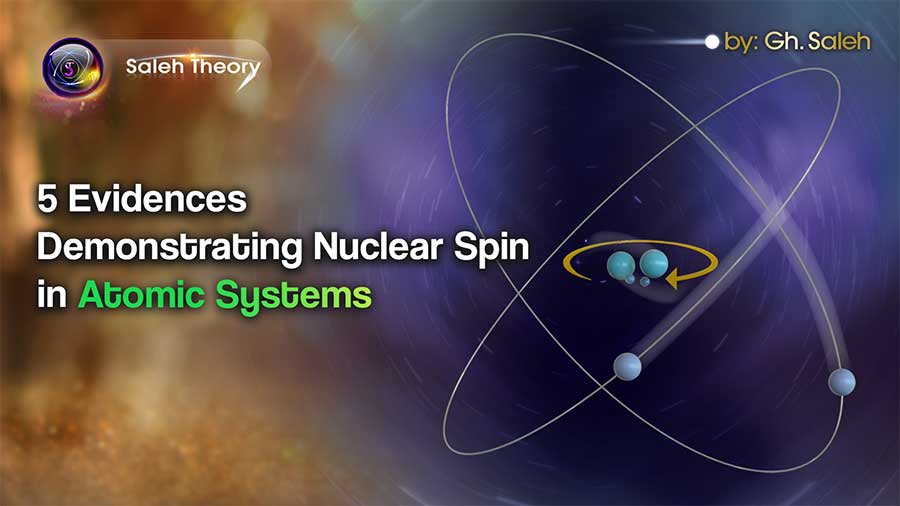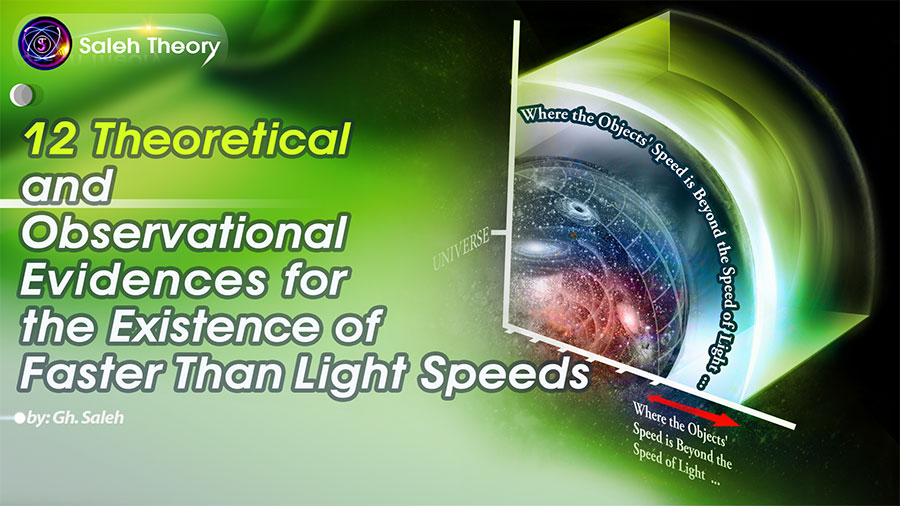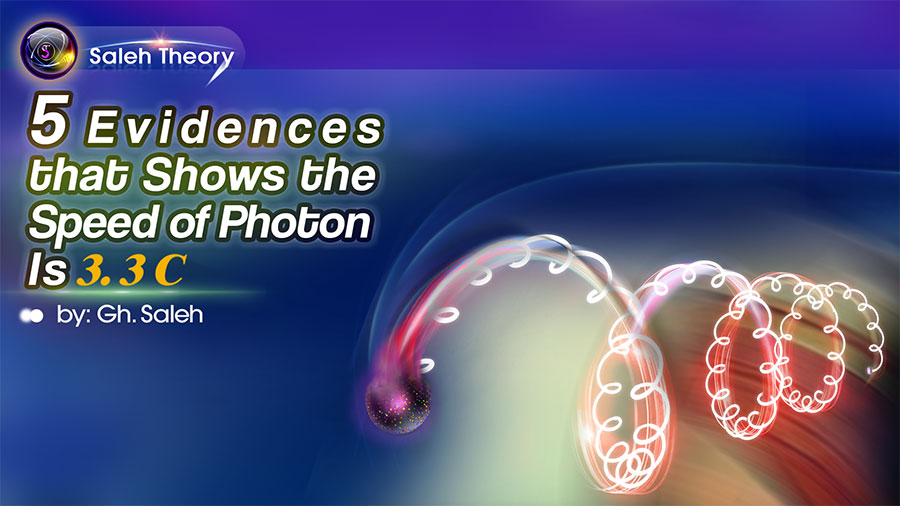
5 Evidences Demonstrating Nuclear Spin in Atomic Systems
1. Conservation of energy
Based on the law of conservation of energy, the amount of energy is equal to mass multiplied by speed square two. If we impact a motionless mass and pieces detach from it, these detached pieces will fall next to the mass, but if we do with a rotating mass at high speed (for example, a piece of wood that is rotating at high speed), any piece that is separated from it will inevitably have a projectile motion. So, if we consider nuclear fission, in which the nucleus of an atom splits into two or more smaller nuclei, photons, etc., if the nuclei of the atoms have no motion, after impact, their remnants would fall next to it. But if the nuclei of the atoms have spins at high speed, any pieces that are separated from them would inevitably have a projectile motion.
In other words, in the nuclei of atoms, the separated particles, as a result of the explosion, can be thrown out with the speed of light "C" due to the high-speed rotation of the nucleus. In fact, the initial speed of all separated particles is caused by protons and neutrons that are inside the nucleus and are rotating at the speed of light, “C”.
2. Conservation of angular momentum
According to the law of conservation of angular momentum, if an atomic nucleus undergoes disintegration or decay and transforms into various particles or radiations (such as photons), then the total angular momentum of all the resulting products must exactly equal the angular momentum of the original nucleus before the event.
Based on the theories proposed by Saleh Research Group, photons possess helical motion, which inherently includes a form of spin or angular momentum. Therefore, each photon emitted during the nuclear decay process carries a well-defined amount of angular momentum. Since these photons collectively carry non-zero total angular momentum, it logically follows that:
The original nucleus must have possessed angular momentum before disintegration—that is, it must have been spinning or rotating about its own axis.
Otherwise, the sudden appearance of angular momentum after decay, without any initial angular momentum in the system, would violate the fundamental principle of angular momentum conservation. Thus, both from a classical mechanics perspective and within the framework of newer quantum-helical models, especially those emphasising photon spin, we can conclude that:
The atomic nucleus must exhibit intrinsic rotational motion (spin) before its disintegration
3. Universal correspondence principle
The structure and pattern of motion of the smallest known particles are the same as those of the largest objects in the universe. From photons to galaxies, everything follows a common rule: rotation, concentric orbits, and spherical harmony. It's as if nature has used a single template at all levels of existence.
Atoms have a spherical nucleus and electrons, which are also spherical and orbit this nucleus. The structure of an atom is also a combination of the nucleus, orbiting around itself, and the electrons orbiting around it.
4. Atoms as miniature solar systems
Each solar system also includes a spherical star at its centre, which rotates both around itself and its galaxy, and tens of planets orbit this star. In an atom, the nucleus is at the centre, like the sun, and electrons orbit around it like planets. The nucleus itself also spins, just like the sun rotates on its own axis.
5. Spin for structural balance in atomic systems
One of the key reasons for the existence of rotational motion in the atomic nucleus is the preservation of structural balance within the atomic system. In atomic models, electrons orbit the nucleus in an orderly manner, and this motion requires a counterbalancing stability at the centre of the atom. If the nucleus lacked rotational motion, such a dynamic asymmetry could lead to instability in the overall behaviour of the atom. Therefore, to maintain physical equilibrium and ensure coherence within the atomic structure, the nucleus must possess an intrinsic form of rotational motion.
References:
[1] Saleh, Gh. " A New Explanation for the Structure of the Nuclei of Atoms From Smallest to the Largest Part A." Saleh Theory, 20 Jun. 2025, https://www.saleh-theory.com/article/a-new-explanation-for-the-structure-of-the-nuclei-of-atoms-from-smallest-to-the-largest-part-a
[2] Saleh, Gh. "A Simple Explanation for the Existence of the Multiple Universes Part C." Saleh Theory, 18 May. 2025, https://www.saleh-theory.com/article/a-simple-explanation-for-the-existence-of-the-multiple-universes-part-c
[3] Saleh, Gh. "Proof of the Rotation of the Nuclei of Atoms Using the Law of Conservation of Energy and Momentum." Saleh Theory, 12 Sep. 2022, https://www.saleh-theory.com/article/proof-of-the-rotation-of-the-nuclei-of-atoms-using-the-law-of-conservation-of-energy-and-momentum
[8] Saleh, Gh. "New Discoveries about the Nucleus of Atoms 2." Saleh Theory, 27 Feb. 2022, https://www.saleh-theory.com/article/new-discoveries-about-the-nucleus-of-atoms-2
[9] Saleh, Gh. " New Discoveries about the Nucleus of Atoms." Saleh Theory, 13 Feb. 2022, https://www.saleh-theory.com/article/new-discoveries-about-the-nucleus-of-atoms
 Download PDF
Download PDF 

